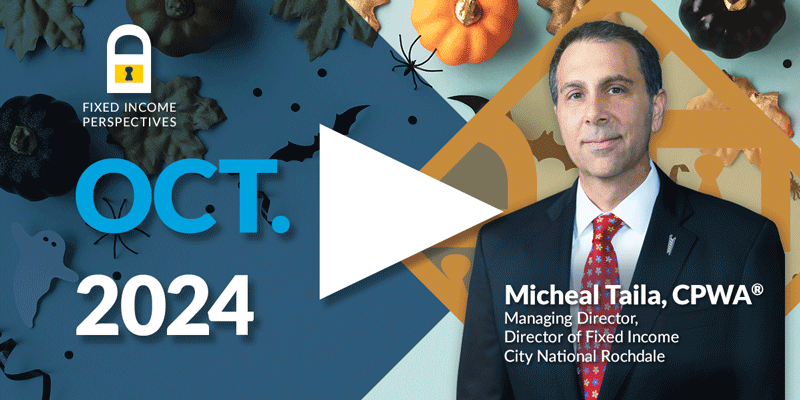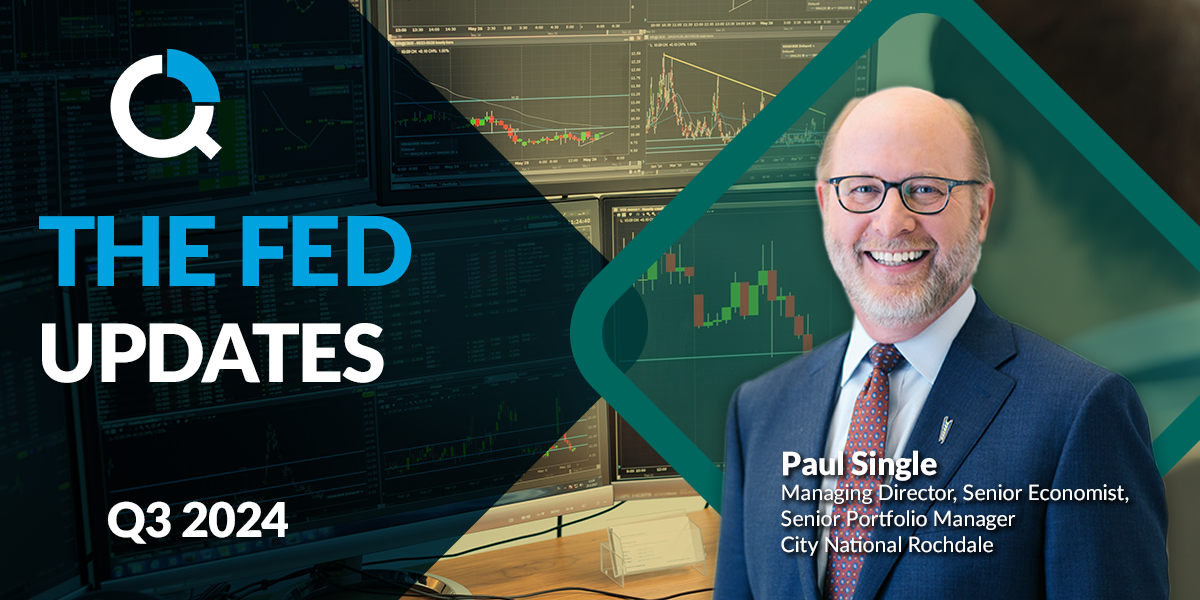

FAQs on the Markets and Economy
With the strong data at the beginning of the year, what do you think the Fed will do at its upcoming meeting?
Economic reports from the past few weeks have added to earlier data confirming January had a stunning economic turnaround.
It has caused a sharp reassessment of what the market thinks the Fed needs to do to slow the pace of economic growth and bring down inflation. This year's peak rate in the federal funds' futures had jumped almost 50 basis points (bps) since before the economic reports were released (see chart). The earlier belief that the Fed will need to cut interest rates later this year is no longer the general assumption. Higher for longer continues to be the Fed’s mantra.
The question is, will this hot pace continue or not? How much of January's strength can be attributed to seasonal adjustments or the switch from brutal weather in December to warm January weather? Fortunately, much of the important economic data (labor, ISM, CPI & retail sales) for February will be released over the next few weeks and before the next FOMC meeting on March 22.
We believe that the Fed will raise the federal funds rate by 25 bps to the median level of 4.875% at its March 22 meeting.

At what point will the higher level of interest rates start to slow down consumption?
Although the strong labor report, robust spending, and waning disinflationary pressures are capturing the headlines and keeping the outlook of a robust economy alive, there has been some important information from banks.
There has been a marked shift in loan demand. It may be because interest rates are now well into the restrictive territory, or because banks are becoming more stringent in lending due to growing fears of a recession and the quality of their loan portfolios (especially commercial real estate). In the past few quarters, almost half the banks have tightened their lending standards to the level only seen in past recessions. This includes widening the spread over the cost of funds, tighter loan covenants and collateralization requirements, shorter maximum maturities, and a reduction in the sizes of credit lines. The numbers of consumers and businesses wanting loans are fading. More importantly, the growth rates in the numbers of consumer and business loans is falling (see chart). This economy runs on credit, but without that credit expanding, economic growth will slow over the next few quarters.

Is recent international equity outperformance sustainable?
After meaningfully lagging over the past several years, international stocks have outperformed U.S. equities since last November.
Among the reasons for this recent outperformance are the perception that European valuations were cheap, and that Europe’s economy was not in as bad a shape as feared, as well as optimism around China's reopening. While it is not surprising for international equities to have periods of outperformance, we do not think such outperformance is sustainable over the longer term. Indeed, with the current rally in particular, markets seem to have priced in all the positives and none of the negatives surrounding the outlook ahead.
In Europe, economic data has been surprisingly resilient as consumers benefited from a milder-than-expected winter and declining energy prices, but growth expectations remain subdued. The economy still faces strong headwinds from high inflation, and with European Central Bank (ECB) policymakers behind the curve, the drag from rising interest rates looks set to intensify in coming quarters. Meanwhile, with no end in sight, the Ukraine War continues to weigh on consumer and business sentiment.
For investors, European corporate earnings also continue to significantly lag behind their U.S. counterparts and longer-term expectations remain lower. Relatedly, much of the difference in valuations between the U.S. and Europe can be explained by different sector structures of the equity markets. Euro equities are as expensive as U.S. equities when viewed on a sector-adjusted basis.
In China, near-term consumption is expected to get a significant boost from the lifting of virus restrictions, but reopening effects will likely be smaller and shorter-lived than seen in other advanced economies, due to relatively less accumulated savings and destruction of net wealth. Chinese policy uncertainty also remains significantly elevated based on rising tensions with the U.S. and West, continuing support for Russia, and a radical shift in the country’s economic model from one prioritizing economic growth to one that emphasizes common prosperity and national security over profitability and shareholder rights.
Given all this, we continue to believe the U.S. equity market outlook remains the most resilient for investors. As reflected in our 4Ps framework, the U.S. economy holds a significant advantage across several policies, demographics, potential for innovation, and profitability criteria that drive long-term growth. For CNR to become more constructive on the outlook for international equities, we would likely need to see several important changes, including an end to the war in Ukraine and a reversal of authoritarian trends in China, among other developments.

Certificate of deposit rates are finally attractive; or are they?
It’s no secret that short-term interest rates have skyrocketed, moving from 0.04% to 4.81% in fewer than 14 months.1
Cash pays well for the first time in more than 15 years,2 but now that cash investments are attractive, where should you invest? This is often a confusing decision, given options from Certificates of Deposit (CDs), Commercial Paper (CP), Money Market Funds, and Repurchase Agreements to Treasury Bills (T-Bill), Short-Term Corporate Debt, and plain-vanilla Deposit Accounts.
We’ve found that investors feel two times worse about losing money than they feel good about making money,3 so decisions are often led by what is perceived as the safest option. As a result, investors discard investments not backed by the FDIC, and with many online banks, such as Capital One, Synchrony and Goldman Sachs’ Marcus offering rates above 4% for one-year CDs, why do anything else4?
For starters, a six-month T-bill pays 5.08%5 and, if you check your bank’s rates, they are likely closer to the national average for a one-year CD of 1.44%6. FDIC insurance is nice, but not foolproof, and it only protects investors up to a limit of $250,000. Historically, the FDIC has failed to support investors impacted by fraud. T-bills are backed by the U.S. Government and can be purchased in unlimited amounts through an investment account. While concerns about the debt ceiling are valid, history shows that the Treasury would be forced to prioritize T-bill payments and keep paying debts. From a tax perspective, CDs are subject to state, local and federal tax while T-bills are only subject to federal taxes, saving investors in high-tax states a significant amount of money.
The investment decision becomes even clearer when comparing an investment account to bank solutions, even assuming investors could access Fed rates over the past 14 months that have been far higher than any comparable bank product. Assuming a $10 million balance, the investment account resulted in an $82,000 income advantage.7 Components of a managed account include overnight repurchase agreements, which are backed by treasury collateral and move in lockstep with Fed rates and short-term corporate debt through bonds and commercial paper. These investments are often the underlying positions in Prime Money Market funds and can yield well over 5%. 8 Your cash in a bank savings account may be sitting in these asset classes already and at eye-popping fees when an investment account is available at much lower expenses.
So, the next time you are tempted to spring for that CD, consider the whole spectrum of offerings and remember that working with an investment manager can result in substantial outperformance.
Important Disclosures
The information presented does not involve the rendering of personalized investment, financial, legal or tax advice. This presentation is not an offer to buy or sell, or a solicitation of any offer to buy or sell, any of the securities mentioned herein.
Certain statements contained herein may constitute projections, forecasts and other forward-looking statements, which do not reflect actual results and are based primarily upon a hypothetical set of assumptions applied to certain historical financial infor-mation. Certain information has been provided by third-party sources, and although believed to be reliable, it has not been inde-pendently verified, and its accuracy or completeness cannot be guaranteed.
Any opinions, projections, forecasts and forward-looking statements presented herein are valid as of the date of this document and are subject to change.
There are inherent risks with equity investing. These include, but are not limited to, stock market, manager or investment style risks. Stock markets tend to move in cycles, with periods of rising prices and periods of falling prices.
Investing in international markets carries risks such as currency fluctuation, regulatory risks and economic and political instability.
There are inherent risks with fixed income investing. These may include, but are not limited to, interest rate, call, credit, market, inflation, government policy, liquidity or junk bond risks. When interest rates rise, bond prices fall. This risk is heightened with in-vestments in longer-duration fixed income securities and during periods when prevailing interest rates are low or negative.
Investing involves risk, including the loss of principal.
As with any investment strategy, there is no guarantee that investment objectives will be met, and investors may lose money.
Past performance is no guarantee of future performance.
This material is available to advisory and sub-advised clients, as well as financial professionals working with City National Rochdale, a registered investment advisor and a wholly-owned subsidiary of City National Bank. City National Bank provides investment management services through its sub-advisory relationship with City National Rochdale.
Non Deposit Investment Products are: Not FDIC Insured, Not Bank Guaranteed, May Lose Value
The information presented does not involve the rendering of personalized investment, financial, legal, or tax advice. This presentation is not an offer to buy or sell, or a solicitation of any offer to buy or sell any of the securities mentioned herein.
Certain statements contained herein may constitute projections, forecasts and other forward-looking statements, which do not reflect actual results and are based primarily upon a hypothetical set of assumptions applied to certain historical financial information. Readers are cautioned that such forward-looking statements are not a guarantee of future results, involve risks and uncertainties, and actual results may differ materially from those statement. Certain information has been provided by third-party sources and, although believed to be reliable, it has not been independently verified and its accuracy or completeness cannot be guaranteed.
Past performance or performance based upon assumptions is no guarantee of future results.
Indices are unmanaged and one cannot invest directly in an index. Index returns do not reflect a deduction for fees or expenses.
Any opinions, projections, forecasts, and forward-looking statements presented herein are valid as on the date of this document and are subject to change.
All investing is subject to risk, including the possible loss of the money you invest. As with any investment strategy, there is no guarantee that investment objectives will be met and investors may lose money. Diversification does not ensure a profit or protect against a loss in a declining market. Past performance is no guarantee of future performance.
This material is available to advisory and sub-advised clients, as well as financial professionals working with City National Rochdale, a registered investment adviser and a wholly-owned subsidiary of City National Bank. City National Bank provides investment management services through its sub-advisory relationship with City National Rochdale.
INDEX DEFINITIONS
S&P 500 Index: The S&P 500 Index, or Standard & Poor’s 500 Index, is a market-capitalization-weighted index of 500 leading pub-licly traded companies in the U.S. It is not an exact list of the top 500 U.S. companies by market cap because there are other criteria that the index includes.
Muni Bond: A municipal bond is a debt security issued by a state, municipality or county to finance its capital expenditures, including the construction of highways, bridges or schools. These bonds can be thought of as loans that investors make to local govern-ments.
Bloomberg Barclays U.S. Corporate High Yield Bond Index: measures the USD denominated, high-yield, fixed-rate corporate bond market.
Dow Jones Select Dividend Index: The Dow Jones U.S. Select Dividend Index looks to target 100 dividend-paying stocks screened for factors that include the dividend growth rate, the dividend payout ratio and the trading volume. The components are then weighted by the dividend yield.
CBO: A collateralized bond obligation (CBO) is a type of structured debt security that has investment-grade bonds as the underlying assets backed by the receivables on high-yield or junk bonds.
Moody’s: Moody’s Corporation (MCO) is the holding company that owns both Moody’s Investors Service, which rates fixed income debt securities, and Moody’s Analytics, which provides software and research for economic analysis and risk management. Moody’s assigns ratings on the basis of assessed risk and the borrower’s ability to make interest payments, and its ratings are closely watched by many investors.
Penn Wharton Budget Model: Penn Wharton Budget Model’s (PWBM) tax policy simulator allows policymakers, members of the media, and the general public (“users”) to see the impact that potential reforms to tax policy will have on many the economy and the federal budget.
NDMC: National Drought Mitigation Center (NDMC) The National Drought Mitigation Center’s mission is to reduce the effects of drought on people, the environment and the economy by researching the science of drought monitoring and the practice of drought planning.
NOAA: The National Oceanic and Atmospheric Administration (NOAA) is an American scientific and regulatory agency within the United States Department of Commerce that forecasts weather, monitors oceanic and atmospheric conditions, charts the seas, conducts deep sea exploration, and manages fishing and protection of marine mammals and endangered species in the U.S. exclusive economic zone.
USDA: The United States Department of Agriculture (USDA) is the federal executive department responsible for developing and executing federal laws related to farming, forestry, rural economic development, and food.
The SIFMA Municipal Swap Index: The Securities Industry and Financial Markets Association Municipal Swap Index is a 7-day high-grade market index comprised of tax-exempt Variable Rate Demand Obli-gations (VRDOs) with certain characteristics. The Index is calculated and published by Bloomberg. The Index is overseen by SIFMA’s Municipal Swap Index Committee.
CalPERS: The California Public Employees’ Retirement System, also known as CalPERS, is an organization that provides numerous benefits to its 2 million members, of which 38% are school members, 31% public agency members, and 31% state members.
4Ps: The 4P analysis is a proprietary framework for global equity allocation. Country rankings are derived from a subjective metrics system that combines the economic data for such countries with other factors including fiscal policies, demographics, innovative growth and corporate growth. These rankings are subjective and may be derived from data that contain inherent limitations.
Stay Informed.
Get our Insights delivered straight to your inbox.
Put our insights to work for you.
If you have a client with more than $1 million in investable assets and want to find out about the benefits of our intelligently personalized portfolio management, speak with an investment consultant near you today.
If you’re a high-net-worth client who's interested in adding an experienced investment manager to your financial team, learn more about working with us here


